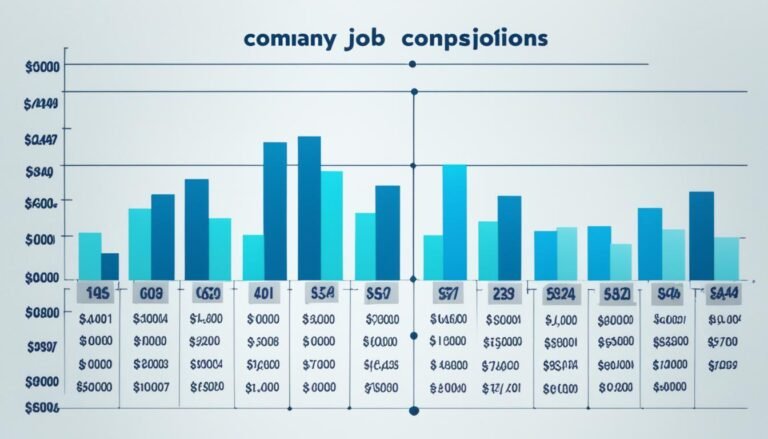A Guide to Human Resource Development
Human Resource Development (HRD) is a crucial component of organizational success. It involves training and developing employees to enhance their knowledge, skills, and abilities. By investing in HRD, organizations can foster a talented workforce, improve performance, and drive organizational growth.
In this article, we will explore the intricacies of Human Resource Development and its significance in talent management, employee training, organizational development, learning and development, performance management, career development, and succession planning.
Key Takeaways:
- HRD is essential for enhancing employee knowledge, skills, and abilities.
- Organizations that prioritize HRD are more successful and profitable.
- HRD contributes to talent management, organizational development, and career development.
- Employee training and development lead to improved performance and productivity.
- Succession planning ensures the continuous growth and sustainability of the organization.
The Importance of Human Resource Development
The HR department is often overlooked as a strategically relevant part of a company. However, it plays a vital role in maintaining a sync between the organization and its employees. Organizations that prioritize the development of their human resources are proven to be more successful and profitable. Human resources are the most valuable assets in an organization, and their development should be a top priority for management.
What is Human Resource Development?
Human Resource Development (HRD) plays a crucial role in the growth and success of organizations. It involves providing training and development opportunities to employees, aiming to enhance their knowledge, skills, and talent right from the moment they are hired. HRD recognizes that employees are the most valuable resources in an organization, and it is essential to invest in their development for the overall advancement of the company.
HRD encompasses both monetary and non-monetary methods of training employees. It includes various initiatives such as employee training programs, knowledge base enhancement activities, talent development workshops, and skill-building initiatives. By investing in HRD, organizations ensure that their workforce is equipped with the necessary capabilities to make informed decisions and perform their duties effectively.
Employee training is a critical component of HRD. Through training programs, employees acquire new skills and strengthen existing ones, enabling them to contribute to the organization’s goals more efficiently. Knowledge base enhancement activities, on the other hand, focus on expanding employees’ expertise in specific areas, keeping them updated with the latest industry trends and best practices.
“Human Resource Development is not just about providing training; it is about creating a learning culture within the organization.”
The Importance of Talent Development
Talent development is a key objective of HRD. By identifying and nurturing talented individuals within the organization, HR professionals can create a skilled and motivated workforce that drives organizational growth. Talent development initiatives involve providing employees with opportunities for career advancement, skill-building, and leadership development.
Talent development also contributes to employee retention. When employees feel valued and see a clear path for growth within the organization, they are more likely to stay committed and loyal. This not only saves the organization from the costs of hiring and training new employees but also fosters a sense of stability and continuity in the workforce.
Furthermore, talent development enhances the organization’s competitive edge in the market. Employees with advanced skills and knowledge contribute to innovation, productivity, and the overall success of the organization. As a result, organizations that prioritize talent development are better positioned to thrive in a constantly evolving business environment.
Harnessing the potential of human resources through HRD is a strategic investment that yields long-term benefits for both employees and organizations. By continuously developing employees’ skills and knowledge, organizations create a strong foundation for growth and success.
Features of Human Resource Development
Human Resource Development (HRD) encompasses several key features that contribute to the growth and success of an organization. By focusing on these features, companies can effectively utilize their resources, enhance interpersonal relationships, foster team spirit, and cultivate a positive organizational climate.
- Valuing Humans as Resources: HRD recognizes that human capital is the most valuable asset of any organization. By treating employees as valuable resources, companies emphasize their importance and invest in their development to maximize their potential.
- Developing Employee Capabilities: HRD aims to enhance the capabilities of employees, enabling them to handle current challenges and prepare for future opportunities. By providing training and development programs, organizations empower their workforce to continuously improve their knowledge and skills.
- Optimum Resource Utilization: HRD emphasizes the effective utilization of resources for the benefit of both employees and the organization. It ensures that employees are allocated to tasks and projects that align with their abilities and interests, resulting in increased productivity and job satisfaction.
- Building Interpersonal Relationships: HRD fosters the development of strong interpersonal relationships among employees. By promoting teamwork, collaboration, and effective communication, organizations create a supportive and harmonious work environment.
- Fostering Team Spirit: HRD nurtures a sense of team spirit among employees. By encouraging teamwork, shared goals, and mutual support, organizations create a cohesive and motivated workforce that can accomplish challenging tasks together.
- Creating a Professional Organizational Climate: HRD plays a pivotal role in shaping the organizational climate. By fostering a culture of professionalism, respect, and fairness, organizations create a positive work environment that encourages employee engagement, satisfaction, and overall organizational success.
These features of Human Resource Development highlight the importance of investing in employee growth, effective resource utilization, and cultivating a positive work environment. By prioritizing HRD, organizations can harness the full potential of their workforce and achieve sustainable success.
Image: Illustration representing the key features of Human Resource Development.
Advantages of Human Resource Development
Human Resource Development (HRD) offers numerous benefits to organizations, enabling them to cultivate a talented and superior workforce, improve employee retention, generate cost-saving opportunities, and enhance market competitiveness.
Attracting and Developing a Talented Workforce
HRD plays a crucial role in attracting and nurturing a talented workforce. By providing opportunities for skill enhancement, career development, and continuous learning, organizations can create an environment that appeals to top talent. Investing in HRD ensures that employees feel valued and supported, leading to increased job satisfaction and motivation.
Improved Employee Retention
By prioritizing HRD initiatives, organizations can foster a culture of growth and development, which contributes to higher employee retention rates. When employees have access to training programs and opportunities for advancement, they are more likely to stay with the company long-term. Reduced turnover not only saves recruitment and training costs but also contributes to the stability and continuity of the organization.
Cost-Saving Opportunities
HRD can significantly impact an organization’s cost-saving efforts. Instead of hiring new recruits or outsourcing certain tasks, organizations can capitalize on the existing skills and potential of their employees. By continuously investing in employee development, companies can enhance productivity, efficiency, and innovation, leading to financial savings and optimized resource utilization.
Enhanced Market Competitiveness
Organizations that prioritize HRD gain a competitive edge within the market. A well-trained and skilled workforce is better equipped to adapt to changing industry trends, technological advancements, and evolving customer needs. HRD enables employees to acquire and develop the competencies necessary for the organization to remain agile, innovative, and responsive to market demands.
By capitalizing on the advantages that HRD offers, organizations can create a thriving and sustainable business environment. Investing in the development of employees not only benefits individuals but also drives organizational success and market competitiveness.
Methods used for Human Resource Development
Human Resource Development (HRD) entails various training methods to enhance the skills and abilities of employees. These methods can be categorized into two primary categories: on-the-job and off-the-job methods. Both play a pivotal role in the overall development of human resources.
1. On-the-job methods
On-the-job methods involve providing employees with specific tasks and responsibilities that contribute to their skill enhancement. Some commonly used on-the-job training methods include:
- Job Rotation: This method involves assigning employees to different roles and departments within the organization for a certain period. It allows individuals to gain exposure to various aspects of the business and develop a broad skill set.
- Coaching: In this method, experienced employees or supervisors provide one-on-one guidance and support to their subordinates. It offers personalized training and mentoring to help employees improve their performance and develop new skills.
- Job Instructions: This method involves providing detailed instructions and guidance to employees regarding their tasks. It ensures clarity and promotes the development of job-specific skills.
- Internships: Internships provide opportunities for students or new hires to gain practical work experience in a professional setting. It allows them to apply their theoretical knowledge and build relevant skills.
2. Off-the-job methods
Off-the-job methods involve training employees outside the workplace, providing a change in environment to facilitate learning and development. Some commonly used off-the-job training methods include:
- Case Studies: In this method, employees analyze real or hypothetical situations to develop problem-solving and decision-making skills.
- Incidents: Employees are presented with real-life scenarios or incidents and are required to respond accordingly. It helps enhance their ability to handle critical situations.
- In-Basket Exercises: This method simulates real work situations by providing employees with a set of documents or tasks to manage. It helps improve their organizational and time management skills.
- Lectures: Lectures involve instructional sessions led by subject matter experts to impart theoretical knowledge and industry insights.
- Simulations: Simulations replicate real-work environments and situations to simulate practical experiences and enhance specific skills.
The combination of on-the-job and off-the-job training methods ensures a comprehensive and well-rounded approach to Human Resource Development. These methods cater to different learning styles and provide employees with diverse opportunities for growth and skill enhancement.
Illustration: Various methods are used for Human Resource Development.
Challenges in Human Resource Development
Human Resource Development (HRD) faces numerous challenges in today’s dynamic and evolving business landscape. These challenges stem from both external environmental factors and internal organizational changes. The ability to navigate and overcome these challenges is crucial for HRD professionals to effectively develop and nurture a skilled workforce.
Workforce Demographics
The workforce demographics of organizations have become increasingly diverse, embracing individuals from various backgrounds, cultures, and generations. This diversity brings unique challenges when designing HRD programs that cater to the needs and aspirations of all employees. HRD professionals must strive for inclusivity and equality in their development initiatives, recognizing the value of diversity in driving innovation and fostering a harmonious work environment.
The Global Economy
In today’s global economy, organizations face intense competition as they strive to remain relevant and competitive. The rapidly changing business landscape necessitates continuous employee development to adapt to emerging trends and technological advancements. HRD plays a vital role in equipping the workforce with the necessary skills and knowledge to navigate this competitive global environment.
Skill Gaps
Identifying and addressing skill gaps within the workforce is a critical challenge for HRD professionals. Skill gaps can occur in various areas, such as technical skills, digital literacy, or industry-specific knowledge. These gaps may hinder organizational growth and hinder the achievement of strategic goals. HRD must implement targeted training programs and initiatives to bridge these skill gaps, ensuring employees have the competencies required to excel in their roles.
“The only limit to your impact is your imagination and commitment.”
– Tony Robbins
To effectively address these challenges, HRD professionals must adopt a proactive and strategic approach to talent development. By understanding the workforce demographics, the changing global economy, and addressing skill gaps, HRD can create a resilient and adaptable workforce that drives organizational success.
| Challenges | Impact | Solutions |
|---|---|---|
| Workforce Demographics | Ensuring inclusivity and equality | Designing development programs catering to diverse needs |
| The Global Economy | Intense competition and the need for adaptability | Continuous employee development to stay ahead |
| Skill Gaps | Impeding organizational growth | Targeted training programs to bridge gaps |
Overcoming these challenges requires proactive measures, strategic thinking, and a commitment to ongoing skill development. HRD professionals play a vital role in driving organizational success by equipping employees with the necessary knowledge and skills to thrive in an ever-evolving business landscape.
The Role of HR in Employee Relations
The HR department plays a crucial role in managing employee relations. They are responsible for creating a positive work environment that fosters healthy relationships, resolves conflicts, and promotes effective communication among employees.
HR professionals are trained to address employee concerns and ensure that employees have a conducive workplace culture. By actively listening to employees and addressing their issues, HR professionals play a pivotal role in maintaining a harmonious work environment.
Resolving Conflicts
One of the key responsibilities of HR is conflict resolution. When disputes or disagreements arise between employees, HR professionals step in to mediate and find resolutions. They employ various conflict resolution techniques such as negotiation, facilitation, or even mediation sessions to ensure that conflicts are effectively resolved and relationships are mended.
Creating a Positive Workplace Culture
HR professionals are instrumental in establishing a positive workplace culture. They work closely with managers and employees to cultivate a safe, inclusive, and respectful environment. By implementing policies and practices that promote diversity, equity, and inclusion, HR fosters a culture where employees feel valued, respected, and motivated to perform their best.
Effective Communication
A crucial aspect of employee relations is effective communication, and HR plays a vital role in facilitating this. HR professionals provide guidance on how to establish open lines of communication and encourage transparency throughout the organization. They also ensure that important information and updates are effectively communicated to employees, fostering trust and increasing employee engagement.
Effective employee relations lead to a more productive and satisfied workforce, which in turn contributes to the overall success of the organization.
By focusing on employee relations, the HR department plays a crucial role in ensuring employee satisfaction and overall organizational success.
The Impact of HR on Organizational Success
The HR department plays a crucial role in driving organizational success by effectively managing talent, promoting employee engagement, and facilitating organizational growth. Through strategic talent management practices, the HR department attracts, develops, and retains top-performing employees, ensuring the organization has the right people in the right positions.
Employee engagement is another area where HR makes a significant impact. By fostering a positive work culture, encouraging open communication, and providing opportunities for growth and development, HR professionals create an environment where employees feel valued and motivated. This leads to increased productivity, innovation, and overall job satisfaction.
Furthermore, the HR department plays a pivotal role in aligning employee development with the organization’s strategic goals. By identifying skill gaps and implementing targeted training programs, HR professionals ensure that employees have the necessary knowledge and skills to contribute to the organization’s growth and success.
Example Quote:
“The HR department acts as a catalyst for organizational success. Through talent management, employee engagement, and aligning employee development with strategic goals, HR professionals create a thriving work environment that fosters growth and drives organizational outcomes.” – Jane Smith, HR Director at ABC Company
Benefits of HR department’s impact:
- Attracts, develops, and retains top talent
- Increases employee engagement and job satisfaction
- Enhances productivity and innovation
- Aligns employee development with strategic goals
- Drives organizational growth and success
The table below provides a visual representation of how HR department impacts organizational success:
| Impact | HR Initiatives |
|---|---|
| Talent Acquisition | Strategic recruitment, effective onboarding |
| Talent Development | Training and development programs, succession planning |
| Employee Engagement | Employee recognition, wellness programs, feedback systems |
| Performance Management | Goal-setting, performance reviews, performance improvement plans |
| Organizational Culture | Values alignment, diversity and inclusion initiatives |
Building an Effective HR Department
Building an effective HR department is a strategic endeavor that requires careful planning and implementation. By following a systematic approach, organizations can ensure that their HR department operates smoothly and efficiently, contributing to the overall success of the company.
1. Staffing Plan:
A staffing plan is crucial in determining the roles and responsibilities within the HR department. It involves identifying the required skill sets and qualifications for each position, as well as outlining the reporting structure and workflow. A comprehensive staffing plan aligns the HR department’s functions with the organization’s overall goals and objectives.
2. HR Budget:
Setting an HR budget is instrumental in allocating resources for hiring and training HR professionals. A well-planned budget ensures that the HR department has the necessary funds to attract top talent, implement employee development programs, and manage day-to-day HR operations effectively. The HR budget should be aligned with the organization’s financial goals and objectives.
3. Employee Handbook:
Developing an employee handbook is an essential HR function that provides employees with a clear understanding of company policies, procedures, and expectations. The handbook covers topics such as code of conduct, employee benefits, leave policies, and performance expectations. A well-crafted employee handbook promotes consistency, transparency, and accountability within the organization.
4. Safety Procedures:
Implementing safety procedures is crucial for maintaining a healthy and safe work environment. The HR department plays a key role in ensuring compliance with safety regulations, conducting risk assessments, and promoting employee well-being. By prioritizing safety, organizations can protect their employees and minimize workplace accidents, fostering a culture of trust and productivity.
5. Continuous Learning and Development:
HR departments should prioritize continuous learning and development to stay updated with emerging HR practices and industry trends. This can be achieved through employee training programs, professional development opportunities, and participation in HR conferences and workshops. By investing in their own development, HR professionals can enhance their skills and expertise, ultimately benefiting the organization as a whole.
| Building an Effective HR Department Checklist |
|---|
| Create a staffing plan |
| Set an HR budget |
| Develop an employee handbook |
| Implement safety procedures |
| Prioritize continuous learning and development |
Building an effective HR department requires careful consideration of staffing, budgeting, policies, and employee well-being. By intentionally investing in these key areas, organizations can establish a robust and effective HR department that contributes to the overall success and growth of the company.
Conclusion
Human Resource Development (HRD) plays a vital role in the success of organizations. By building an effective HR department and prioritizing employee development, companies can cultivate a talented and engaged workforce. Investing in HRD practices not only enhances organizational performance but also creates a positive work environment that fosters employee satisfaction and loyalty.
Organizations that understand the significance of HRD and implement effective strategies gain a competitive edge in the market. By focusing on talent management, employee training, and career development, companies can attract and retain top performers, leading to increased productivity and innovation. HRD also ensures that organizations align employee development with strategic goals, driving organizational growth and success.
To leverage the power of HRD, organizations should invest in building an effective HR department. This involves creating a staffing plan, allocating resources to HR functions, and establishing comprehensive policies and procedures. By providing HR professionals with the necessary tools and support, organizations can effectively manage employee relations, resolve conflicts, and promote effective communication within the workforce.
In conclusion, HRD is not just an administrative function but a strategic driver of organizational success. By valuing human resources and investing in their development, organizations can enhance productivity, improve employee satisfaction, and achieve their goals in today’s competitive business landscape.







